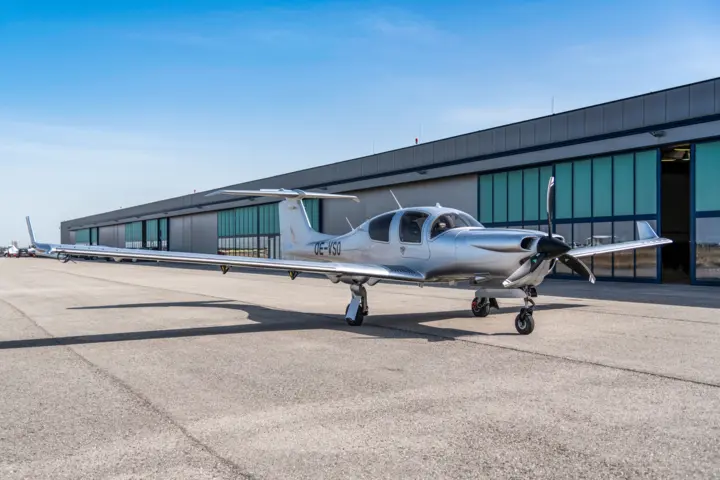Flight test data: fast and simple visualization and analysis
"Developments are constantly moving ahead – and at present, of course, the main trend is towards sustainable flight," according to Thomas Tholl, who joined Diamond Aircraft in 2009 and now heads the flight test instrumentation team in the company's Flight Science department. He continues: "We're currently working on a new aerobatic turboprop trainer with tandem seat configuration in our DART project, which is tying up most of our testing capacity." For the upcoming development tasks, Tholl is relying on jBEAM and MaDaM – which he has been using since 2021. Kistler's software – jBEAM for measurement data analysis and visualization, and MaDaM for management and archiving – has proven extremely helpful in day-to-day work, and it saves precious time in the development process.
Diamond Aircraft started with three licenses each for jBEAM and MaDaM. These were recently expanded with two jBEAM single-user licenses for the two power users. A gradual adjustment to the increasing demand is still planned. "jBEAM is very fast – and because it is simple to operate, other colleagues can also use it for tasks such as certification and calibration," Tholl adds. The software's openness and hardware independence are highly appreciated, as is direct contact with the developers: this allows ongoing development of features and functions as required.
Speeding up the process from raw flight test data to qualified statements
Some of the individual flight tests – such as vibration analysis on the aircraft – proceed very dynamically and have their own specific characteristics. Given these conditions, fast and precise data analysis with slight variations for each flight is the perfect solution. The data is evaluated directly after the test flight, which can last from two minutes to two and a half hours. As soon as the results are available, the process can continue with the next iteration – so it is critically important to work efficiently. "The flight test engineer wants to know as quickly as possible, or see from a graph, whether the test was successful," Tholl points out. "We also maintain close contact with Kistler to keep on developing the processes – to improve the evaluation of maneuvers, for instance, or even to evaluate them directly in the future – that's to say, while the aircraft is still in the air."
For data import and evaluation, jBEAM is usually faster than other analysis software – and as time goes on, it is even replacing various tools that are no longer able to process the recorded measurement data. In combination with Kistler's MaDaM measurement data management software, this gives Diamond Aircraft a reliable data source – the 'single source of truth' – that also opens up possibilities for later data analyses, cross-comparisons, pattern recognition and many other applications. In all these ways, the Kistler software plays a decisive part not only in the ongoing development of Diamond Aircraft's portfolio, but also in the imminent transformation to sustainable aviation.
A valuable companion on the journey to sustainable aviation
"At the moment, we're developing the eDA40 – an all-electric aircraft that can fly for over one hour without any emissions. What's more, it can be charged quickly – probably within 20 to 30 minutes," Tholl notes. "As well as that, we've launched one project on sustainable aviation fuels (or SAFs), and another that focuses on hydrogen-powered planes. We'll also continue to deploy technology from Kistler in the future – right now, for instance, we're testing their very compact and lightweight accelerometers. So it's likely that we'll be using hardware as well as software from Kistler going forward."










![From measured to added value in less time [object Object]](https://kistler.cdn.celum.cloud/SAPCommerce_Document_Preview/961-840e.webp)